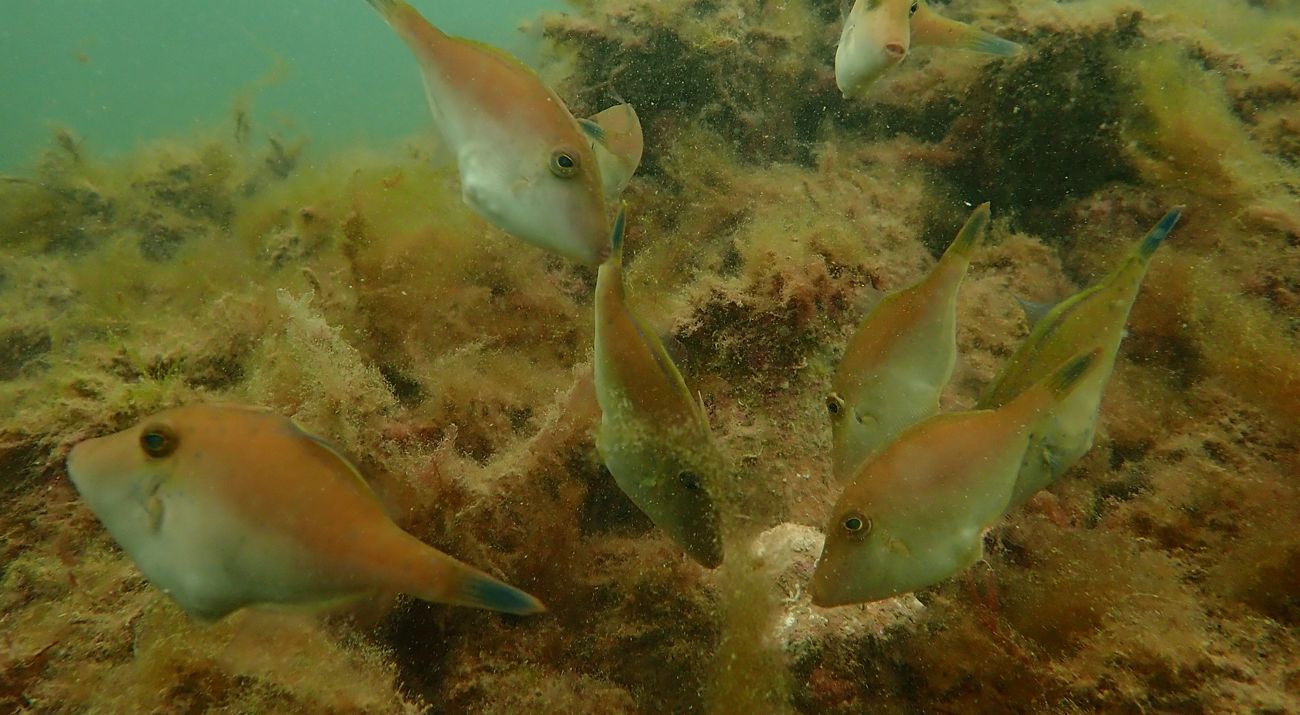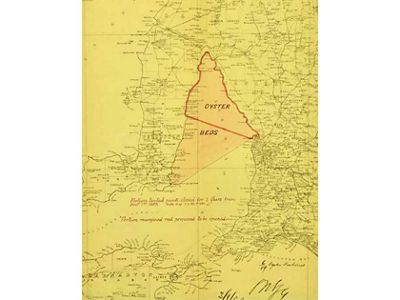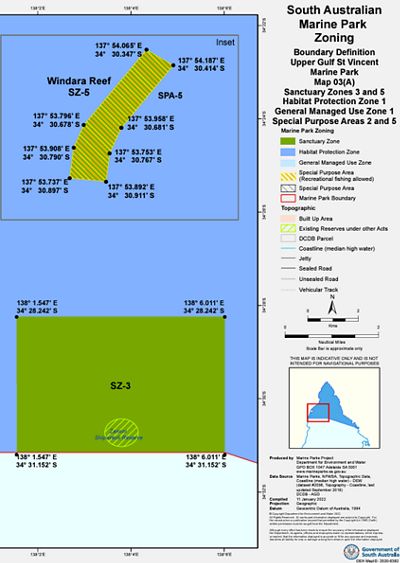
Using our proven methods of restoring the lost shellfish reefs of southern Australia, we have built Windara Reef, off Ardrossan in Gulf St Vincent, South Australia.
As a result, all the social, economic and environmental benefits of shellfish reefs – more fish, cleaner water and increased biodiversity – are bouncing back.
The history of Gulf St Vincent and oyster reefs
Gulf St Vincent is a large, 120km long, shallow (<50 metres depth) marine embayment located in the centre of the southern Australian coastline in South Australia. The state's capital city of Adelaide and most of the state's population is located on the eastern side of the gulf and, as a result, the coastline has been subjected to many different pressures from development, agricultural and urban water runoff, and fishing.

Oyster reefs fell into decline
In 1911, after a long expedition examining oyster-bearing areas in the northern Gulf St Vincent, the South Australian Chief Inspector of Oyster Fisheries sat down at his desk in Port Lincoln to report on the condition of the reefs under his responsibility.
He noted that in the early days of the European colonialists, the oyster supply was obtained from the eastern shores of Yorke Peninsula and the dredging there continued for years, constantly crossing and recrossing over the same oyster beds without regulation of any kind. This meant that the oyster beds were never allowed to recover. Where previously there was an abundance of oysters, he reported that hardly any oysters could be found and that the once prolific oyster beds were becoming less and less productive each passing year.
With firm conviction, he recommended that to conserve existing oyster beds and extend the life of the industry, all further dredging had to be suspended to enable the beds to recover.
Restoring Shellfish Reefs
The Nature Conservancy has and continues to be determined to reverse this historic decline. As we are elsewhere across Australia, we’ve applied our expertise in shellfish reef restoration (gained in places like Victoria and the United States) to restore these reefs and all their benefits.
We partnered with the Australian Government's Department of Infrastructure, Transport, Cities and Regional Development (through its National Stronger Regions Fund), South Australian Government, Yorke Peninsula Council and the University of Adelaide to create Windara Reef—a $4.2 million shellfish reef across twenty hectares of seafloor near Ardrossan, South Australia.
The Windara Reef Restoration project
The word ‘Windara’ is the Narungga name for the eastern area of the Yorke Peninsula Region. Narungga was made up of four clans which shared the Guuranda (the Yorke Peninsula), separated into Kurnara in the north of the peninsula, Dilpa in the south, Wari in the west and Windara in the east.
Restoring this reef is critical to improve marine biodiversity, fish production and water quality in the Gulf. The project will result in economic and social benefit to the nearby communities of Yorke Peninsula through the creation of new jobs, increased aquaculture, ecotourism and recreational fishing opportunities, as well as new volunteering and community education programs.
Windara Reef has been built in two phases involving creating a limestone reef seeded with Australian Flat Oysters at a depth of 12 metres. The first 4 hectare reef was delivered by Primary Industries and Regions South Australia (PIRSA) in June 2017 and we expanded the reef up to 20 hectares in October 2018. Over seven million oysters were seeded onto the 159 limestone reef bases in 2019.
The reefs are within the Upper Spencer Gulf Marine Protecedt Area (Habitat Protection Zone) to maintain the integrity of the reefs. They are open to recreational fishing only.

The reefs are coming back to life
The reef is already showing promising indicators that it is on track to be a success but it’s still early days yet where colonising species like sponges and algae are dominant but we are already seeing schools of whiting, leather jackets, snapper, cuttlefish, scallops and many different species of crabs associated with the reef.
Our scientific surveys also confirmed oysters are surviving with wild oyster recruitment on the newly built limestone reefs. This wild recruitment will support our hatchery reared oyster deployments improving the long-term sustainability of the reef. Current estimates of juvenile and mature oysters are up to 98 oysters per metre square.
It doesn't stop here
TNC and the Department for Environment and Water have monitored the reefs over the past 8 years using diver measurements of marine biodiversity and abundance using reef live surveys, oyster counts and Baited Underwater Video cameras.
Scientists from the University of Adelaide and Flinders University continue to undertake research projects at the site.